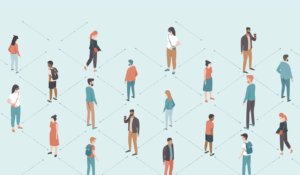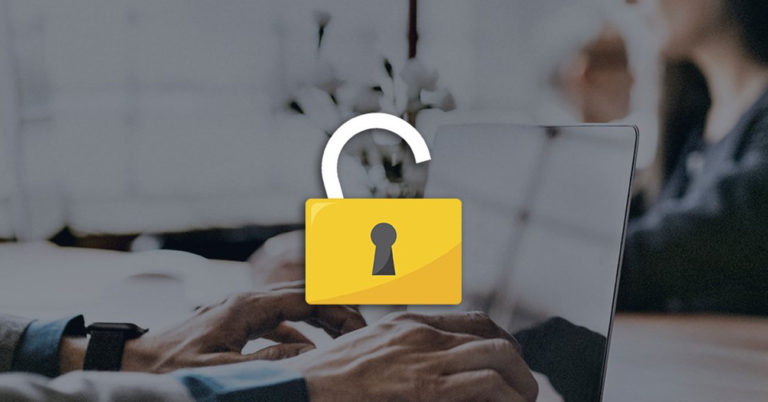I bet there’s one thing in common between you, me, Angela Merkel, Bill Gates and WHO leader Tedros Adhanom right now. We are all racking our brains, wondering how the world can safely get out of the corona lockdown and back towards normal.
I’m proud to say that we at Quuppa have a solution that can help. Our Real-Time Locating System (RTLS) technology is already being used in workplaces and hospitals to get society’s wheels back in motion. Let me share with you a few practical examples about how RTLS works in unlocking the lockdown.
RTLS in Workplace Social Distancing
A burning question in our minds is how to get the economy up and running again. How can factories, offices, shops and other workplaces reopen while still complying with social distancing requirements designed to ensure the safety of their employees and customers?
We know that RTLS technology is the only secure and accurate solution to measure the distance between two people or objects. For example, employees can wear small, unobtrusive tags on their lanyards, on their wrists, or attached to their helmets. These tags can then monitor the distance between workers and send out a vibration or a similar alert if they get too close.
This type of solution works in offices, factories and any other indoor environments. The tags have an accuracy of down to 10 centimeters and can send out an alert in less than a second. Should healthcare authorities at some point require employers to prove that social distancing practices are being adhered to in their companies, data generated by the tags can easily be used to provide an audit trail. Surprisingly simple, isn’t it?
RTLS in Contact Tracing
Another key element in defeating the COVID-19 threat is contact tracing: finding out where infected people have been and who they have had contact with. I have read about many countries including Taiwan, England and Norway, that have already developed contact tracing mobile applications for their citizens. But what puzzles me is that these applications rely on conventional Bluetooth® technologies which is not nearly as accurate as RTLS solutions (down to 10 centimeters). RTLS provides the same level of accuracy for a tag or a smartphone.

In contact tracing cases, RTLS can be used for backward auditing of people’s whereabouts. Based on the collected data, notifications can be sent out to all contacts if a person gets tested positive for COVID-19. I’m convinced that RTLS-based contact tracing will become the new standard in workplace environments, especially hospitals, after the current pandemic.
Quarantine Monitoring
As we enter the next phase in this battle against the coronavirus, we have seen many governments move towards a TTI strategy: Test, Trace and Isolate. For example, in Scotland authorities are prepared to order any infected citizens and their traced contacts to self-quarantine for fourteen days. But how can they ensure people actually stick to these orders?
Well, here’s where RTLS again steps in: healthcare officials use RTLS technology to construct a virtual geo-fence zone for each quarantined individual. The area of the geo-fence can be customised: it could be the size of a room, an apartment, or an entire house with a yard, depending on the circumstances of the quarantined person. The person then wears an RTLS tag provided by the healthcare authority. If they try to leave the geo-fence zone or remove the tag, the system can send an alert to the officials.
RTLS for Hospitals: Asset Tracking and Hand Hygiene Compliance
The various RTLS solutions I have told you about in this blog are particularly efficient in a hospital or care home environment. RTLS provides a really clever way to boost hand hygiene compliance in medical institutions which is literally a life-or-death issue. According to statistics, lapses in hand hygiene compliance lead to more than 130 000 deaths and costs of 13 million euros annually in Europe and North America – and those are pre-corona numbers!
This is how it works: a nurse or a doctor is wearing a tag and a geo-fenced area is defined around the washing station. When they enter the area, a countdown commences to ensure that they spend enough time within it. RTLS-equipped trigger sensors can also be attached to a dispenser to make sure that soap or antibacterial gel has been used. The data provided by the tags can be monitored on an individual level, a ward level or the entire hospital level.
Another use for RTLS in hospitals is reliable asset and people tracking. This is critically important for both safety and efficiency reasons. Using RTLS, any wheelchair, medical scanner, hospital bed, patient, doctor, or other asset or person can be located in real time. The tag can also display the status of an asset: whether it has been marked disinfected and ready for use, or whether it is still awaiting maintenance. This same method can be used in smart offices to know if the common workstation or desk has been cleaned and is safe to use.
From Stay Safe to Act Safe
You have probably noticed how in this era of lockdown, nearly every email, video call or blog article has ended with the phrase: ”Stay safe!” As we now move towards unlocking the lockdown and reopening our lives, I think we should come up with a new farewell saying.
From staying safe, we should now take a leap towards acting safe – using every possible tool, method and technology that can help us.
So, act safe!
